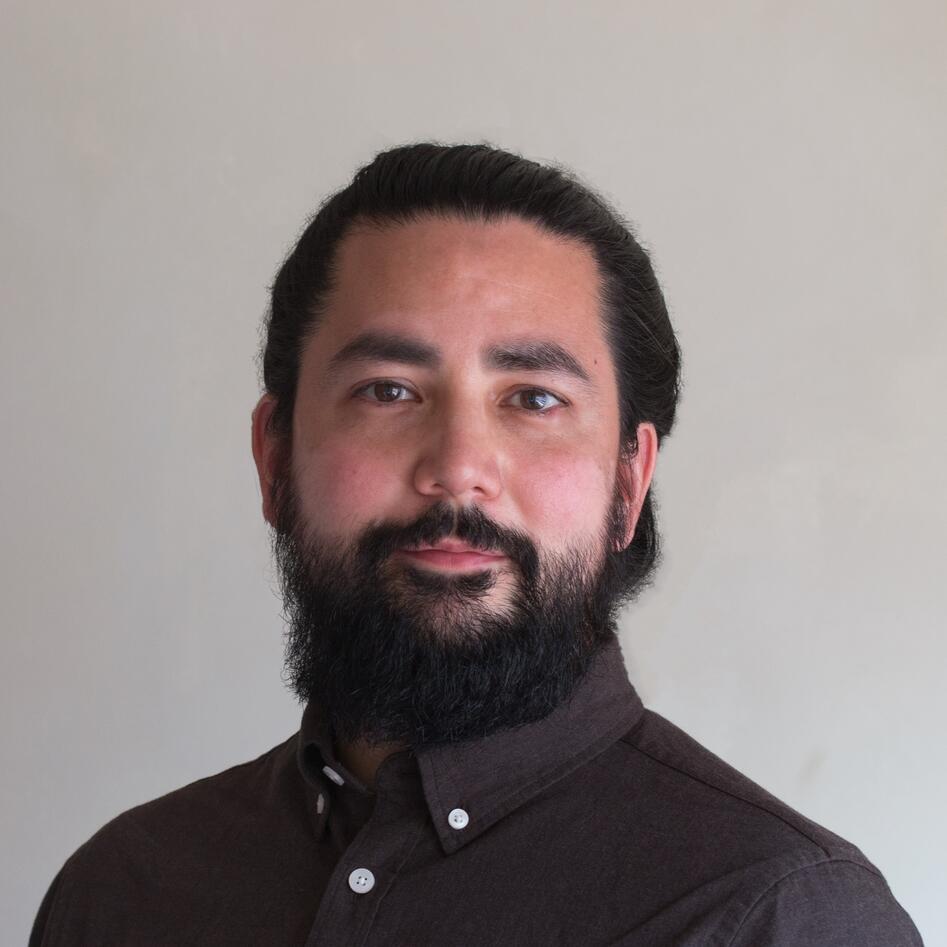Do you have a good idea? Seek support!
Are you a student with an idea of a product or service which can improve people's lives? Or a researcher who wants your research findings to become useful for people? UiB idé is a program that can help you with advice and funding, so that you can reach your goal.

Main content
Good ideas are found in all professional environments, and can become social innovations, public sector innovations, process innovations, commercialization projects or other types of innovation.
You can choose between UiB tidleg idé and UiB idé.
UiB tidleg idé: With UiB tidleg idé, the goal is to bring forward ideas at a very early stage and make it easier to develop innovation projects to the point where they qualify for other funding sources, such as a grant from UiB idé, Research Council of Norway qualification funds, or Innovation Norway Stud-ENT funds. The maximum grant amount is NOK 100,000 for researcher projects and NOK 25,000 for student projects. These funds are awarded throughout the year.
UiB idé: UiB idé gives employees and students the opportunity to verify good innovation ideas that need to be developed and tested before they can be taken further. The maximum grant amount is NOK 500,000 for researcher projects and NOK 100,000 for student projects. The next application deadline is February 14, 2026. The application form opens on January 14, 2026.
Use the same application form and project description template for applications to UiB idé and UiB tidleg idé.
Download the project description template and fill it out, then submit it by clicking the link below:
Click here to fill out the application form and submit your application
Application process for UiB Tidlig idé
- Submit your application: Fill out the form, attach the project description, and obtain approval from your department head (or from your mentor if you are a student).
- Evaluation: Applications will be assessed by advisors at the Innovation Section on a rolling basis, based on application requirements and evaluation criteria.
- Funding and project implementation: You will receive a response within 1–2 months after submission regarding whether your project will receive funding. After the project is completed, you must submit a final report.
Application process for UiB idé
- Submit your application: Fill out the form, attach the project description, and obtain approval from your department head (or from your mentor if you are a student).
- First round of evaluation: In an initial administrative phase, advisors at the Innovation Section review all proposals against the application requirements. Then, the evaluation committee assesses the qualified applications.
- Second round of evaluation – pitch: The highest-ranked applications are invited to a presentation and Q&A session with the evaluation committee.
- Funding and project implementation: You will receive a response within 2–3 months after the deadline regarding whether your project will receive funding. After the project is completed, you must submit a final report.
Evaluation criteria
- The idea. Describe the challenge the project addresses, and the approach / solution to the challenge. How innovative is the idea? What is new? How creative and ambitious is the idea? How solid and mature is the research basis for the idea? How significant is the improvement over existing ones solutions?
- Value proposition. Describes the value of the innovation for the intended end user, and the potential impact of innovation on society, if realized. Describe possible applications.
- The main delivery of the project. Concrete description of what a successful implementation of UiBs verification project will deliver.
- Follow-up plan. Describe what a successful implementation of the UiB idea project will enable, and what to do with the main delivery after the end of the project. Outlines potential follow-up plans and future collaborations necessary to achieve the goals. How can the project results passed on to the intended end users? What next step in the innovation chain will be available, and how realistic is the long-term realization of the innovation after the UiB idea's project end?
- The project group. Describe the composition and competence of the project group (applicant, laboratory / research group where the project is anchored, potential partners and advisers; complementarity and innovation competence in the group). To what extent has the project access to the necessary resources and expertise to carry out this project? The extent to which there is a plan to involve relevant external actors (partners, customers, stakeholders, investors, mentors, social actors, etc.)?
- Project plan and budget. Describes goals, milestones, budget, risk and risk reduction plans, etc. How likely will the outlined goals be achieved by following the project plan? To what extent is budget and financing plans realistic, cost-effective and clearly anchored in the project plans and resource needs?
- Ethics and sustainability. Issues related to research and social ethics requirements shall described as relevant. Prioritization of projects based on the effect on sustainability and the environment (cf. UN sustainability goals) among applications with equal quality assessment.
Read more about the assessment in the program note for UiB idé.
Eligible costs
- Materials / equipment
- Costs related to obtaining external expertise
- Payroll (only for employees and external consultants)
- Rent of incubator space
- Costs associated with prototyping
Costs that are not covered:
- Patenting costs can only be covered for students
- Costs related to basic research activities (equivalent to Technology Readiness Level (TRL) 1-2)
- Costs related to development costs in later phases (equivalent to TRL 4-9)
- Commercialization, marketing and communication activities
Note: As a general rule, all purchases must be made through the purchasing and invoicing system. The project leader must contact the Procurement Section for purchases exceeding NOK 100,000 excluding VAT. Read more information here.
The rights to the idea:
Your idea is safe with us: The handling of your idea will be confidential, and the content of the idea will not be disclosed without your consent. Please notice that the title and abstract of the project will be published, so do not write confidential information here. Intellectual property rights (IPR) may be an important issue that needs to be explored during the project period. There is no general requirement that you must have filed a Disclosure of invention (DOFI) at the time you submit your application to UiB idé.
For projects where a patent application is relevant, it is important that the idea has not been published or made public, for example in articles or presentations at conferences.
In general, employees might share ownership to IPR with UiB, while students fully own the IPR of their products. Read more about the topic here, and feel free to contact Yves Aubert if you have questions about the rights to your idea!
Project example 1: hjelpesiden.no -find mental health support
Psychology students Frida Røvik, Mari Aune and Elin Hanevik are concerned about the lack of overview and access to mental health services for people in need, relatives and health personnel. Using UiB idé to kick-start their idea of building a national service where users could find digital help via phone, e-mail and chat, they partnered with an NGO, The Human Aspect, to build hjelpesiden.no.
Hjelpesiden is the first offering in Norway that provides an overview in the scattered landscape of mental health services and makes health resources available to both users, health professionals and the public agencies. During their UiB idé project, Frida, Mari and Elin established and tested their web-based prototype. After project end, The Human Aspect continued to maintain hjelpesiden, thus making the service sustainable and available to user for the long-term.
Project example 2: A novel 3D cell expansion bioreactor for bone regeneration
Stem cell-based therapy is becoming a promising method for bone regeneration, as it addresses the limitations of current treatments. However, expanding stem cells can be challenging. Issues include slow cell growth and loss of their ability to regenerate (multipotency) when grown in conventional 2D cultures. Additionally, producing these cells for medical use requires special GMP (Good Manufacturing Practice) labs, which are expensive for patients and society.
To solve these problems, Dr. Shuntaro Yamada has created a blueprint for a new 3D cell expansion bioreactor that meets GMP requirements. This bioreactor mimics the conditions inside bones by applying fluid shear stress and loading forces. It also automatically adjusts environmental factors like temperature, gas levels, and pressure to reduce the need for human intervention. This helps stem cells keep their regenerative abilities during expansion and ensures they are produced at a clinical grade.
Moreover, this system offers unique research opportunities by replicating the body's mechanical environment, potentially reducing the need for animal testing. If successful, it will create a strong foundation for bone regeneration.

Francesco Torreli is working on developing a new bone structure using 3D printing and stem cells.
Project example 3: Urban Ocean
Marine technology students Axel Nybakken, Thord Håkon Bakke, Martin Bua Rønhovde, Victoria Helsengreen, and Aksel Borge Harbo founded the company Urban Ocean, where they use low-trophic marine species as a kind of natural purification system in the sea. Following the UiB Idé project, Innovation Norway awarded them NOK 1 million for their work through the STUD-ENT scheme.
Urban Ocean cultivates low-trophic marine species to clean the water and increase biodiversity in the urban fjords where they operate. This is achieved by deploying mussel socks and seaweed lines, which filter the water for particles, absorb nitrogen and phosphorus, and provide natural shelters for marine life. This contributes to cleaner water, enabling marine life to thrive and creating functioning ecosystems. One of their latest projects aims to revitalise the marine ecosystems in Store Lungegårdsvann in Bergen. The project is directly linked to the initiative for a cleaner harbour, in collaboration with Bergen Municipality.
More about Urban Ocean in this video:
Video om Urban Ocean
Benjamin wants to develop a digital tool for land rights to lower the level of land disputes in rural Uganda. Zach to the right in the picture, together with locally hired surveyors.

